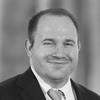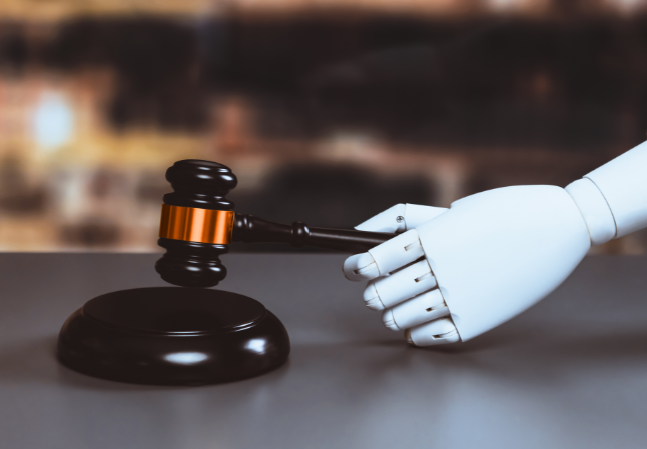Welcome! Save 30% on all CLE, CPE, and Professional Skills webinars, plus 15% off any annual pass with code HOLIDAY25
About the Course
Introduction
This CLE webinar will analyze likely effects of Loper Bright Enterprises v. Raimondo on the USPTO's unusual rulemaking practices, including PTAB and TTAB precedential decisions and binding provisions in the MPEP and TMEP. What rules are no longer enforceable, and how others are likely to change? For both the USPTO and ITC, what new opportunities permit challenges to agency rules and decisions, both during intra-agency proceedings and in court?
Description
Loper Bright overruled the Chevron doctrine. For 40 years, Chevron specified a two-step framework for federal courts in reviewing challenges to agency regulations. Under Chevron, courts would first ask whether Congress had "directly spoken to the precise question at issue" in the statute. If not, the courts were required to defer to the agency's interpretation as long as it was reasonable. Loper Bright has now moved the task of interpreting statutory provisions back into the hands of federal courts. Where past challenges to agency rules faced a standard of review that was highly deferential to the agency, future challenges will benefit from a much more favorable standard.
The Loper Bright decision will impact practice at the USPTO and ITC, and how courts, particularly the Federal Circuit, examine USPTO and ITC statutory interpretations. For example, in anticipation of the decision, Google petitioned the Federal Circuit for reconsideration of Suprema v. Int'l Trade Comm'n, in which the court had deferred to the ITC's interpretation relating to "articles that infringe."
Listen as our authoritative panel examines the Loper Bright decision and its impact on patent practice, the USPTO rulemaking, and ITC practice and offers guidance for best practices moving forward.
Presented By

Mr. Boundy is recognized as an authority in administrative law as it applies to the U.S. Patent and Trademark Office, and using administrative law as an alternative approach to obtain beneficial results from the PTO, particularly in Federal Circuit appeals from IPRs and PGRs. His expertise was recognized by the U.S. Court of Appeals for the Federal Circuit when the court invited Mr. Boundy to chair a panel on Chevron and Auer deference at the 2018 Federal Circuit Judicial Conference. Mr. Boundy also advises clients in strategic development of IP as an integrated asset of the business, and synergizing IP with legal, R&D, finance, and marketing. He has represented and counseled inventors, investors, startups, and established companies in IP matters. The scope of representation includes patent prosecution, licensing, counseling to avoid litigation, opinions, financing and public offering transactions, due diligence, acquisitions, and spinoffs.

Mr. Plail has represented many of the country's leading life sciences and high technology companies in their most important IP and commercial disputes. He has extensive experience with Section 337 investigations before the ITC, post-grant and inter partes review proceedings before the USPTO, and patent litigation before Federal District Courts. With a background in chemical engineering, Mr. Plail has represented clients in industries ranging from oil refining, biotech, and medical devices to artificial intelligence, computer software and hardware, cellular and wireless devices and networks, semiconductors, and consumer products. Mr. Plail has experience with all stages of litigation, including pre-suit investigations, fact and expert discovery, pre-trial submissions, trials, post-trial briefings, and appeals.

As an intellectual property litigator, Mr. Suarez focuses his practice on patent, copyright, and trade secret trials and appeals before every level of the U.S. court system, including federal district courts, U.S. courts of appeals, the U.S. Supreme Court, the U.S. Patent Trial and Appeal Board, and other administrative tribunals. Aside from litigation, Mr. Suarez provides counseling at the intersection of IP and emerging technology. He has written and spoken extensively on topics at the intersection of the Internet of Things and AI, and helps his clients navigate the challenges and opportunities with those technologies. To that end, Mr. Suarez assists clients with developing their IP policies and procedures—including their efforts to balance patent, trade secret, and copyright protections in the context of AI and IoT technology.
-
This 90-minute webinar is eligible in most states for 1.5 CLE credits.
-
Live Online
On Demand
Date + Time
- event
Tuesday, August 27, 2024
- schedule
1:00 p.m. ET./10:00 a.m. PT
- Brief history of court review of agency interpretations of statute under Chevron and Skidmore v. Swift & Co.
- Loper Bright Enterprises v. Raimondo (U.S. 2024): what changes, what stays the same?
- Impact on USPTO rulemaking and adjudication
- Impact on ITC rulemaking and adjudication
- Effect on future legislation and agency rulemaking
- Practitioner takeaways
The panel will review these and other important considerations:
- After Loper Bright, what agency rules are dead letters? When are intra-agency and judicial challenge of regulations or sub-regulatory guidance more viable or attractive? When not? Why?
- How does Loper Bright affect best practices for patent and trademark prosecution, post-grant practice, and ITC trials?
- What should we watch for in notices of proposed rulemaking?
- What rules are especially vulnerable to challenge? Under what circumstances can the PTAB continue to treat its precedential decisions as binding? When can the USPTO treat the MPEP and similar sub-regulatory guidance as binding? What are the interactions between Loper Bright and other recent Supreme Court decisions that open avenues of relief otherwise barred? Who benefits? Who loses?
- Is it time for a portfolio review, and what should you tell your clients?
- Congress will be busy re-legislating statutes for high-visibility and high-impact agencies and areas of law such as EPA, OSHA, and the antitrust agencies. What about agencies that won't get onto the legislative calendar for a decade? How will non-specialist courts interpret statutes that govern highly technical issues?
Unlimited access to premium CLE courses:
- Annual access
- Available live and on-demand
- Best for attorneys and legal professionals
Unlimited access to premium CPE courses.:
- Annual access
- Available live and on-demand
- Best for CPAs and tax professionals
Unlimited access to premium CLE, CPE, Professional Skills and Practice-Ready courses.:
- Annual access
- Available live and on-demand
- Best for legal, accounting, and tax professionals
Unlimited access to Professional Skills and Practice-Ready courses:
- Annual access
- Available on-demand
- Best for new attorneys




